How to Be Better at Time Management
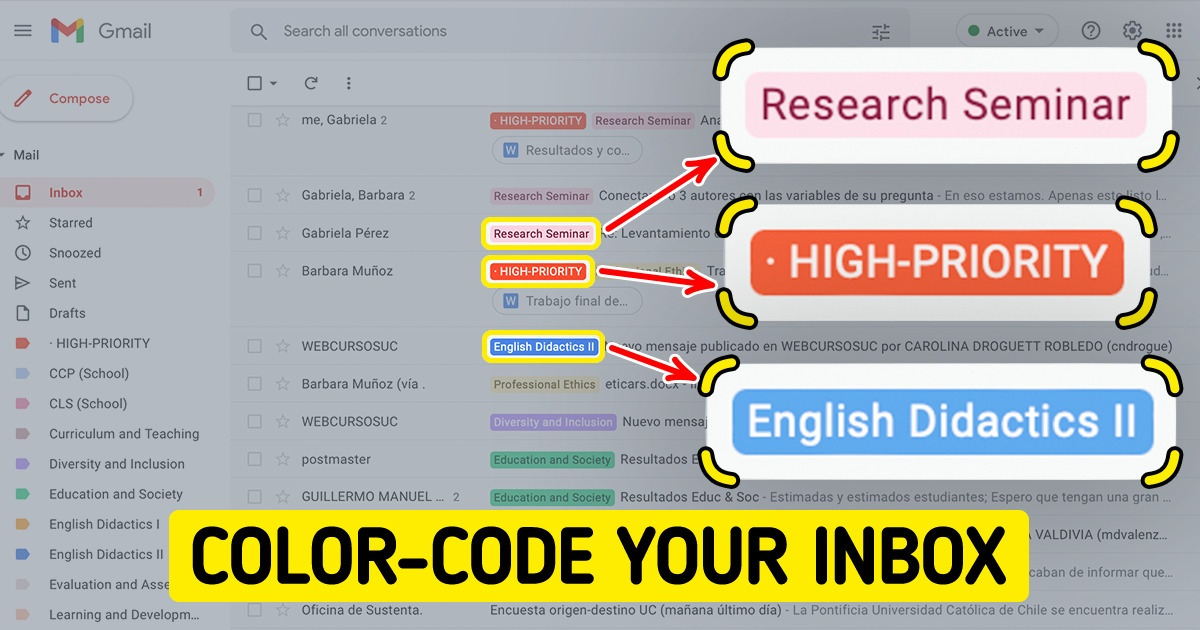
Time management skills are essential nowadays, whether you’re a student, a worker, or someone who just needs to stick to a schedule. Not only will they help you complete tasks on time and achieve your goals, but they also lead to added benefits, including a work-life balance and reduced stress levels.
However, it can be overwhelming to start developing good time management skills. In this article, 5-Minute Crafts will explain how to use and organize your time more effectively.
What time management entails
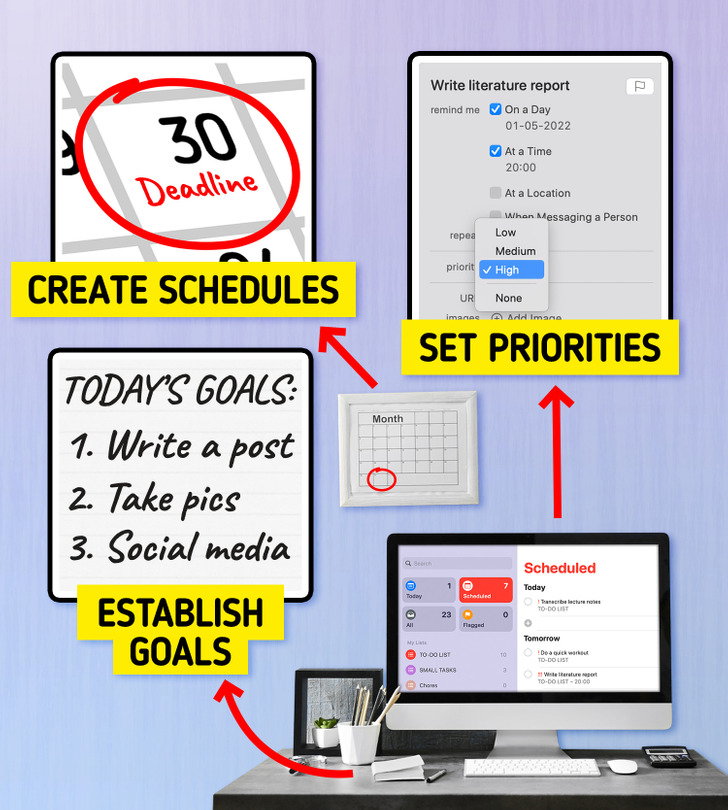
Time management means intentionally spending your time so that you manage it effectively. This will help you increase your productivity and have more time for self-care and other activities you enjoy.
Time management is a complex process that requires a wide range of skills, like:
- Planning: You should analyze your tasks and develop an appropriate schedule that can be met. At this stage, it’s important to organize your time and understand your responsibilities.
- Prioritization: Assign different levels of importance to your tasks, first completing those that are high-priority. This involves understanding how long it’ll take for you to complete all of the tasks.
- Goal-setting: Setting some goals for the day will help you feel more accomplished, which will also increase your motivation levels. Initially, you can aim to fulfill a simple task or a segment of a job.
- Communication: You’ll need to very clearly express your tasks and goals, either in written or spoken forms. This will help you implement plans and schedules successfully.
1. Improve your planning skills.
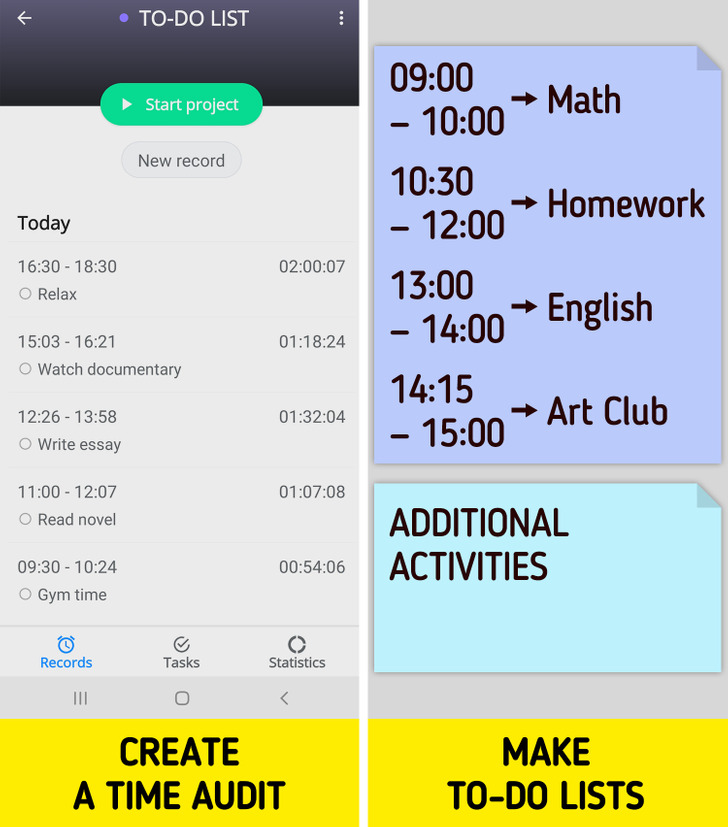
You can begin to do the following things, in the recommended order, to make things smoother:
- Create a time audit: First, you need to understand how you’re spending your time (for example, sending an e-mail might take way longer than you think). In order to do this, you can use a time tracking application and analyze your data for a week, and then find areas for improvement.
- Set achievable goals and prioritize tasks: The time audit will help you identify if you need better time management skills, or if you’ve just got too much going on. If you need to establish priorities, it’s a good idea to start determining the urgency and importance of your tasks.
- Create a daily to-do list: Make a list of tasks for the day, either early in the morning or at the end of your workday. Keep this list simple to avoid feeling disheartened if you don’t complete it.
- Set some time aside: No matter how well you plan, you’ll always face some unexpected activities. For this reason, leave some spare time for them and create a separate list next to your to-do.
2. Make a time limit for your schedule.
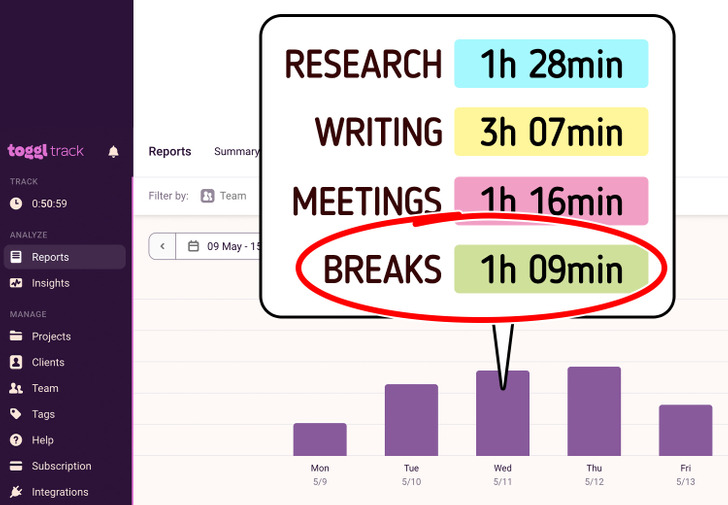
Now it’s time to grab your time audit and analyze it again, but this time from a different point of view. You should try to be more firm but also flexible with certain time limits:
- First, start by identifying tasks that took longer than expected and constrain their completion time. This will not only improve your focus, but it’ll also help you detect duties that are not well-defined, that add unnecessary time to a project.
- You can also examine your workflow if you’re still unable to meet certain deadlines. Maybe you’ll actually need to assign more time to certain tasks from now on to make sure you fulfill them. In addition, you can attempt to eliminate unproductive activities, like unscheduled breaks.
3. Use technology tools.
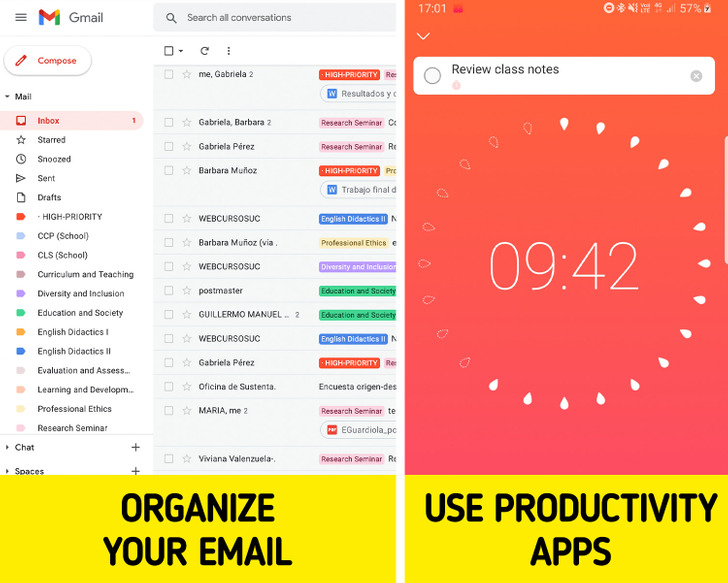
When it comes to time usage, you can resort to technology to make your life easier. Try the following:
- Block out distractions on your devices: Activate the “do not disturb” function when working on a task that requires focus. This option is available on both computers and smartphones.
- Use software to hold yourself accountable: Use time tracking and daily management software to create more realistic schedules and identify procrastination patterns.
- Minimize your open windows: It’s better to center your attention on a single monitor and only open one window. Also, you could go offline, but it’s not necessary to reach that point.
- Organize your email: If you do this, you’ll speed up communication very easily. It’s a good idea to archive messages, create a labeling system, and build email templates, among other things.
4. Identify your patterns of productivity.

It’s important to identify the times of your day when you hit productivity peaks, which will help you optimize your workload. Keep in mind that people have different patterns of productivity throughout the day, so some of us are more efficient in the early morning, while others perform better after lunch.
- Tip: You can make sure to complete longer and top-priority tasks by scheduling simpler duties during productivity lows (that is, faster or easier tasks that require less effort).
5. Try some quick time management strategies.

It can take some time before you get better at time management and incorporate the previous tips into your life. Therefore, it’s a good idea to take the following baby steps:
- Organize your workspace: Visual clutter can lead to mental clutter, so avoid accumulating unnecessary papers and sticky notes. This will make it easier to focus on your duties.
- Tackle quick tasks: Some tasks require a few minutes to complete, like fixing typos or sending files. You can fulfill them in between meetings to free up energy for more complex work.
- Group similar tasks: It’s better to avoid switching between tasks and group-like tasks to perform high-impact work, like focusing on all the tasks of a single project.
- Avoid multitasking: Frequent task-switching usually results in additional mental effort and exhaustion. Instead, focus your entire attention on a single task to feel like you’re “in the zone.”